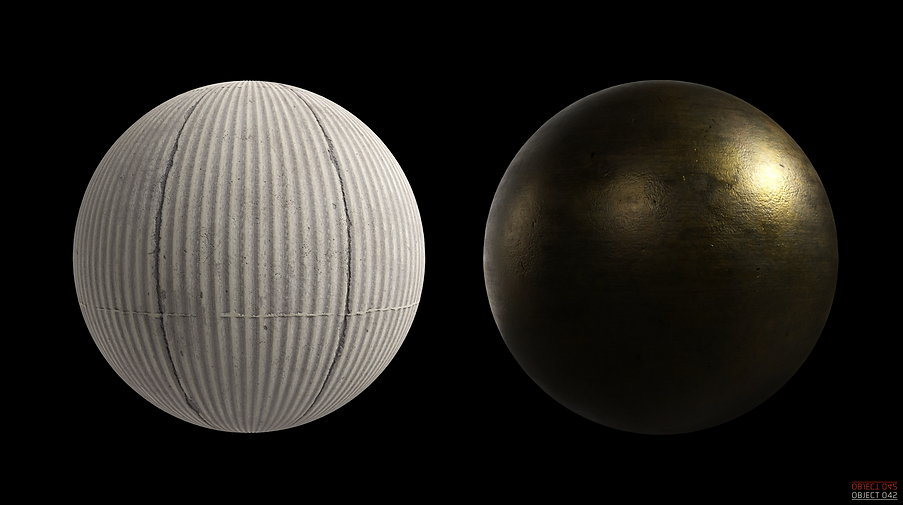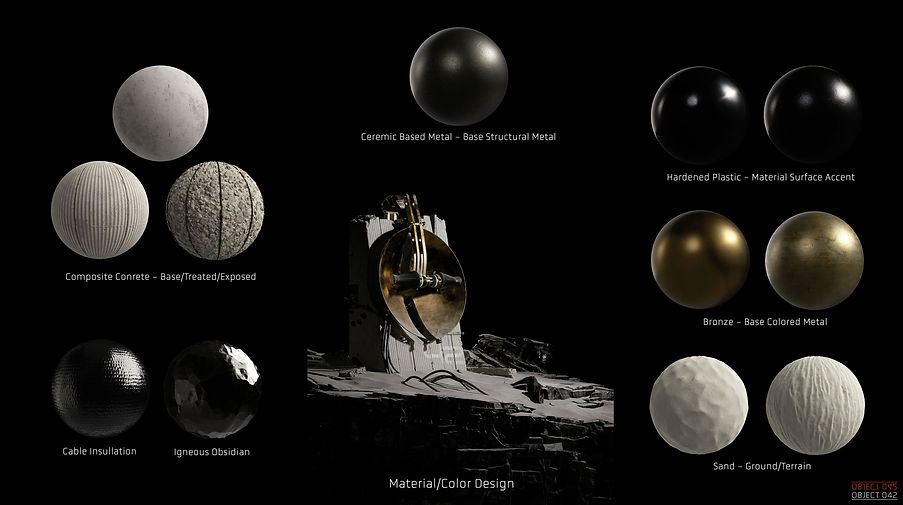
SONGYU
ARIES LIU
Environment Art | Hard Surface | Concept Art
Boulder asset break down. Inspired by boulder kits created for 'God Of War Ragnarok', I am deeply impressed by Timo Pihlajamaki's approach into making clean yet interesting looking rocks. Here is the result of my research, in this case, in order to maintain color consistency I decided to make an obsidian like, geometric igneous boulder.
Will talk more about reusability and shape control in the following paragraph.

Base on OBJECT 042, OBJECT 571 set to explore further aspects of the world it resides. with a much wider world being revealed through the creation of OBJECT 571, I have gained much insight in many aspects of asset creation and adjustment. Procedural terrain generation tool such as GAEA and Houdini has also been added to the pipeline.
All assets was brought into Unreal Engine 5 for testing and set dressing.
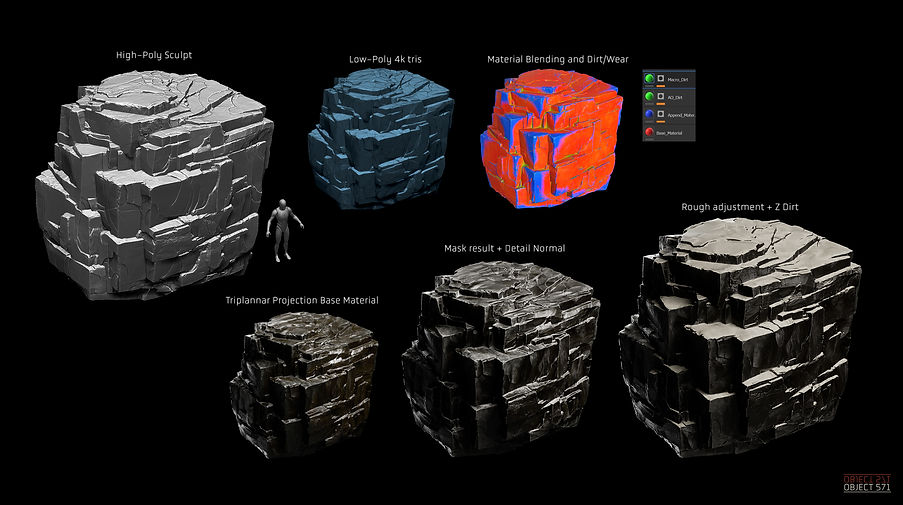
The final result is well optimized in terms of polycount. Through controlling big, medium, and small shapes, all six faces, and eight corners each have their own unique property. I have used this asset repeatedly through OBJECT series and it shows almost non repetition.
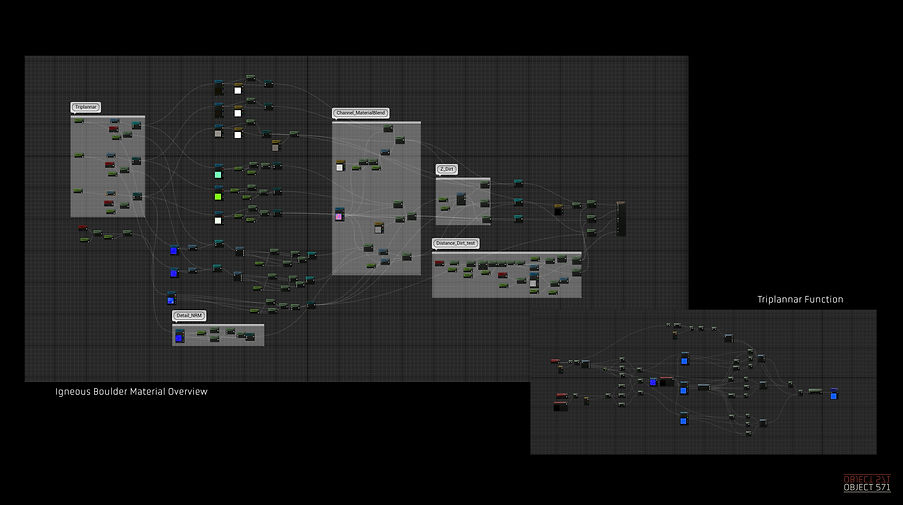
Using Substance Designer, I have created a dozen materials for OBJECT series, ranging from natural materials such as rippled sand to man made material like ceramic metal. I enjoy pushing materials to its limit, by sorting and filtering out peripheral information, what is left is the most iconic and feature defining information which eventually forms the recognition of a material.
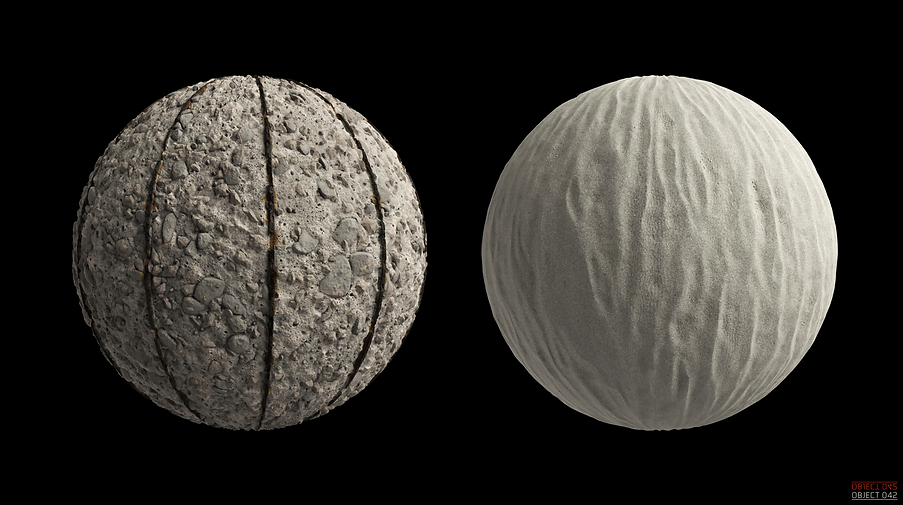
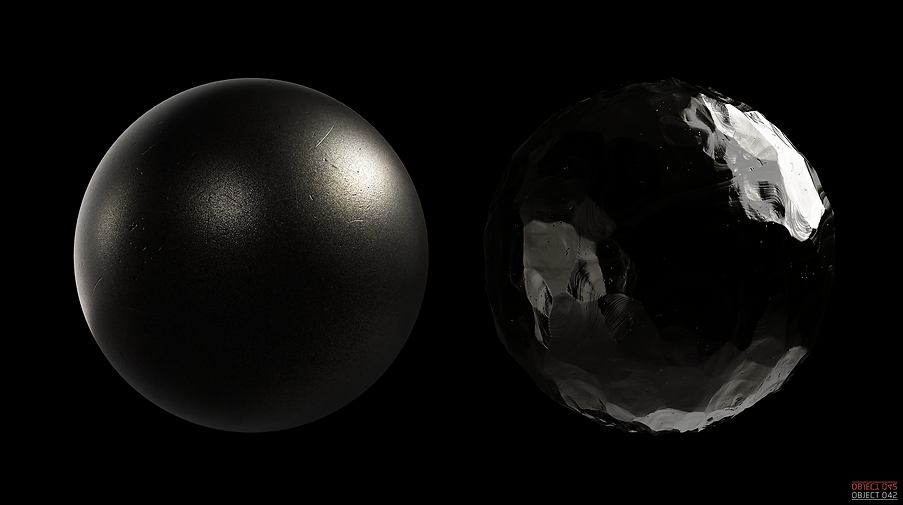
Another great way to push the material to their limit, is through making semi fictional materials. On the left hand side of the following render is a heat resistant, ceramic metal composite material I made based on multiple reference. Its sand blasted finish resembles a coarse yet ceramic like, dense microstructure, paired with micro reflective surfaces which bring out its metallic side.
